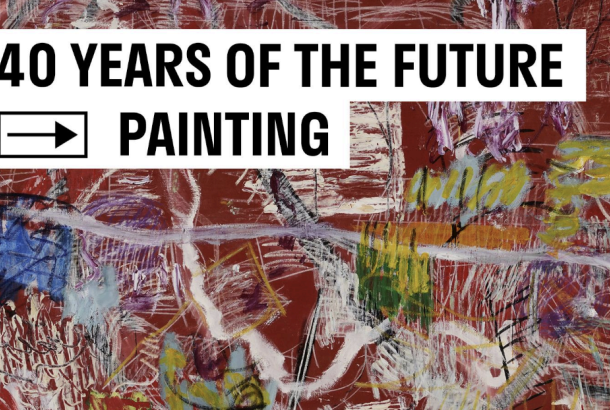
Few contemporary artists are as esteemed and iconic as Japan’s Yayoi Kusama. Her originality, innovation and powerful desire to communicate have propelled her through a career that has spanned six decades. During this time, Kusama has explored painting, printmaking, photography, collage, film and video, performance and installation, as well as product design.
From the late 1950s to the early 1970s, Kusama lived in New York and was at the forefront of artistic innovation in the city. Returning to Japan in her forties, she rebuilt her career, waiting years for the international recognition she has since achieved. In her ninth decade, her imagination remains richly creative and she continues to extend the range of her practice.
Ahead of her You, Me and the Balloons opening in Manchester, as part of the Manchester International Festival, later this month, we were invited to visit her iconic exhibition at the Tate Modern, Infinity Mirror Rooms.
The exhibition features not only the two major installations but also fascinating early documentation of Kusama’s experimental performances and events, as well as a brand-new sculptural work that continues the theme of endless replication.
The first installation is the Infinity Mirrored Room – Filled with the Brilliance of Life, one of Kusama’s biggest installations to date. The work was made specifically for the artist’s retrospective exhibition Yayoi Kusama held at Reina Sofia, Madrid; Centre Pompidou, Paris; Tate Modern, London; and the Whitney Museum of American Art, New York, in 2011 and 2012. The installation exists in an edition of three of which this version owned by Tate is number one.
Visitors pass through the room on a walkway made of mirrored tiles. The walls and ceiling of the room are also mirrored, and the floor surrounding the walkway is covered with a shallow pool of water. Hanging from the ceiling are hundreds of small, round LED lights that flash on and off in different colour configurations on a timed programme. The pinpricks of light in the otherwise darkened room appear to reflect endlessly in the mirrors and the water, giving the viewer the experience of being in a seemingly endless space.
Walking through the room is quite a magical experience; one wonders if they have entered a different dimension or perhaps been spiked with LSD. I was a little worried I might fall into the water, and though it’s shallow so I’d merely get wet feet, the fantasy-like feel of the room had me worried I’d fall into another dimension. It’s a thrilling, chilling experience.
Kusama first used mirrors in the mid-1960s in her large-scale installations Infinity Mirror Room – Phalli’s Field 1965 and Kusama’s Peep Show – Endless Love Show 1966. Although these early works presented a more sexually-oriented language, the way in which the viewer became part of the phenomenological environment, experiencing endlessly multiplied forms, is comparable to the much later Infinity Mirrored Room.

The second installation, the Chandelier of Grief, was created in 2016. It is in an edition of three, of which Tate’s copy is the second; the first edition was premiered at the artist’s monographic exhibition at Victoria Miro gallery in Wharf Road, London in 2016.
Chandelier of Grief is first encountered in the gallery setting as a white hexagonal structure, measuring nearly four metres high. The viewer enters the room via a sliding door and, once this is closed behind them, enters into a mirrored environment in which the sole light source is a baroque-style chandelier suspended above head height from the ceiling of the structure. The chandelier is fixed to a rotating mechanism and, combined with its flickering, pulsating lights and the mirrored walls, is intended to create a destabilising yet mesmerising effect.
The elegiac and ambiguous title of the work, though not representing any particular event in Kusama’s personal narrative, is consistent with her interest in representing through her art complex psychological states, such as mourning; in this regard, the work complements the earlier The Passing Winter 2005, also in Tate’s collection (Tate T12821). Physically, it expands upon her methodical use of repetition in her early paintings and is in keeping with the trajectory of Kusama’s pioneering ‘infinity rooms’ – immersive installations which exploit the disorienting properties of mirrors to create the effect of endless replication.
Whilst other examples of these installations focus on Kusama’s long-term preoccupation with dots, kabocha squashes and phallic forms, Chandelier of Grief uniquely raises the focal point from the ground, directing the viewer’s gaze upwards and emphasising the participatory aspect of the installation. Ultimately, Chandelier of Grief is exemplary of Kusama’s practice as a persistent enquiry into the phenomenological potential of art, in which self and environment become indistinguishable and repetition of forms is employed to assert the overwhelming multiplicity of the universe. As such, these works situate Kusama in the legacy of artists throughout history who have attempted to reconcile and subvert how perspective is perceived in both art and reality.
Whilst the room is pretty simply designed, with a spinning chandelier in a glass case and mirrors all around you, an illusion is created, in which the viewer disappears into a seemingly boundless universe of rotating chandeliers. It’s like a glamorous fun room at a fairground, though I’m not sure Kusama would appreciate such a comparison – perhaps there lies a problem with art.
Whilst the room is enjoyable, some may consider it to be a little mediocre or pretentious, especially compared to other Kusama works, though there is plenty of meaning to appreciate whilst inside. It’s true that art is what you make of it.
Before seeing the mirror rooms, viewers are invited to experience The Universe as Seen from the Stairway to Heaven (2021), a ‘peep’ in sculpture, created especially for this exhibition. Deploying both mirrors and the colourful ‘dot’ motif that Kusama is associated with (and which is absent in her mirror rooms), it recalls the iconic early work in Kusama’s Peep Show or Endless Love Show 1966. The work demonstrates Kusama’s lifelong obsession with the concept of infinite repetition, exploiting the formal properties of mirrors to create the illusion of limitless space.
The installations are accompanied by displays of film and photography, allowing visitors to immerse themselves in Kusama’s life and history.
Reasonably priced and undeniably interesting, albeit not mind-blowing, this exhibition is worth the visit, if you’re fond of contemporary art.
Yayoi Kusama: Infinity Mirror Rooms is currently booking at Tate Modern, London until September 30 2023. Slots sell out in advance so be sure to book early.
Yayoi Kusama: You, Me and the Balloons will be at Factory International (The Warehouse), Manchester from June 30 until August 28 2023.







